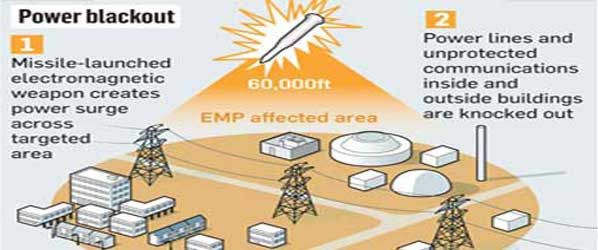
Counter-electronics High-powered Microwave Advanced Missile Project.
An “Electromagnetic pulse” is a burst of electromagnetic energy. A single EMP has the potential to destroy electrical systems over a vast area. It can permanently disable all electrical generating plants as well as equipment using electricity, including those in cars, trucks, planes, trains and computers. It has been estimated that an EMP over continental United States could wreck electrical equipment throughout the entire lower 48 states.
A high-altitude EMP is a human-made event that occurs when a nuclear device is detonated at approximately 40 kilometers or more above the surface of Earth. A natural EMP is a solar event, resulting from sun cycles. It’s important to remember that last point: The danger lurks not only from war. In 1859, in what was called the “Carrington Effect,” all U.S. electrical facilities were destroyed as a result of a solar storm. Fortunately, at the time, that consisted mostly of telegraph equipment. Astronomers who study the sun emphasize that another such solar storm is long overdue.
In 2018, A declassified report from the Congressional Commission to Assess the Threat to the United States from Electromagnetic Pulse Attack warned that China, Russia, North Korea, and Iran had developed the technology for an EMP attack against America.
In extraordinary testimony delivered in 2017 to the House of Representatives Committee on Homeland Security, Dr. William R. Graham, Chairman, and Dr. Peter Vincent Pry, chief of staff, of the Commission to Assess the Threat to America from Electromagnetic Pulse revealed explosive details, including decades of neglect of the menace, how Russia transferred EMP technology to North Korea, and how North Korea already has the capacity to wreck devastation across the United States.
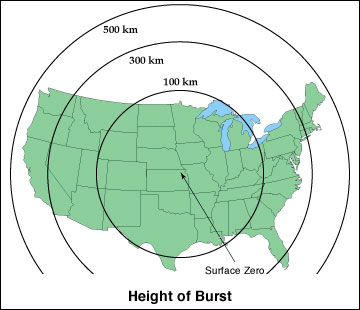
The range of the EMP effects of a high altitude burst. Credit: Atomic Archive
To address the potentially existential crisis, President Trump in March signed an Executive Order (EO) entitled “Coordinating National Resilience to Electromagnetic Pulses.” The EO notes that “An electromagnetic pulse (EMP) has the potential to disrupt, degrade, and damage technology and critical infrastructure systems. Human-made or naturally occurring EMPs can affect large geographic areas, disrupting elements critical to the Nation’s security and economic prosperity, and could adversely affect global commerce and stability. The Federal Government must foster sustainable, efficient, and cost-effective approaches to improving the Nation’s resilience to the effects of EMPs.”
According to Homeland Security Secretary Kirstjen Nielsen, “EMPs pose a potential threat to our nation’s critical infrastructure, and this executive order will advance our national goal of increased resilience across all infrastructure sectors. DHS remains committed to working with our interagency partners to ensure a more resilient, prepared America by reducing the risk of EMP events.”
The EO is designed to foster increased resilience to EMP events through better data gathering, testing, risk assessments, and private sector coordination. It directs departments and agencies to coordinate and streamline efforts, while promoting an environment that encourages private sector innovation to strengthen critical infrastructure.
The EO doesn’t, by itself, resolve the problem. It essentially provides both a roadmap and an order to federal agencies to begin the process of addressing the looming crisis. More must be done. Resources, from both Washington and the private sector, need to be dedicated to the task of protecting the nation’s electrical infrastructure.
Frank Vernuccio serves as editor-in-chief of the New York Analysis of Policy and Government.


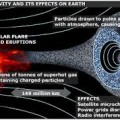
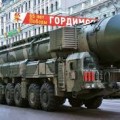
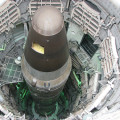











Follow Us